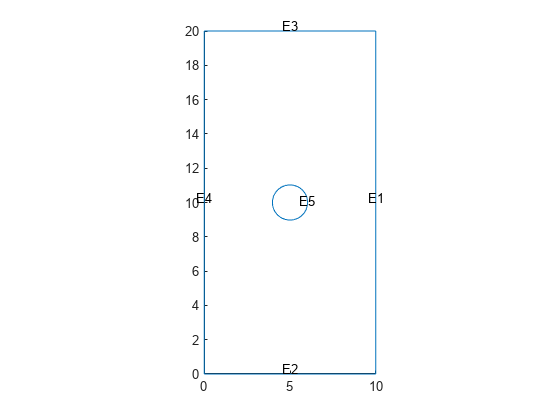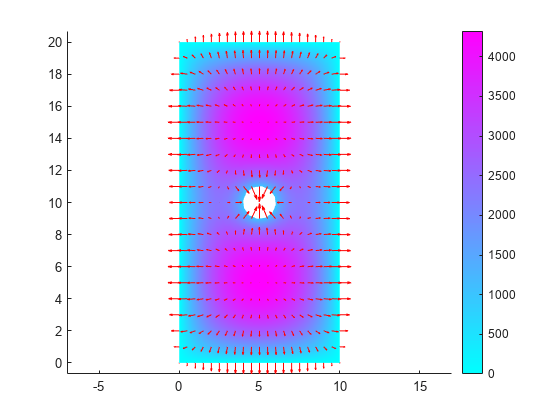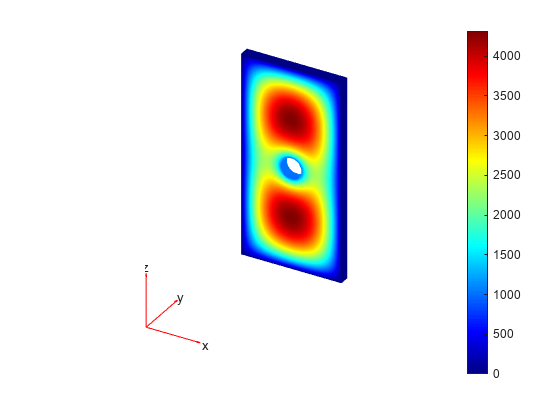ElectrostaticResults
Description
An ElectrostaticResults object contains the
electric potential, electric field, and electric flux density values in a form convenient for
plotting and postprocessing.
The electric potential, electric field, and electric flux density are calculated at the
nodes of the triangular or tetrahedral mesh generated by generateMesh. Electric potential values at the nodes appear in the
ElectricPotential property. Electric field values at the nodes appear in
the ElectricField property. Electric flux density at the nodes appear in
the ElectricFluxDensity property.
To interpolate the electric potential, electric field, and electric flux density to a
custom grid, such as the one specified by meshgrid, use the interpolateElectricPotential, interpolateElectricField, and interpolateElectricFlux functions.
Creation
Solve an electrostatic problem using the solve function. This function returns a solution as an ElectrostaticResults object.
Properties
Object Functions
generateMaxwellStressTensor | Compute Maxwell stress tensor at nodal locations |
interpolateElectricPotential | Interpolate electric potential in electrostatic or DC conduction result at arbitrary spatial locations |
interpolateElectricField | Interpolate electric field in electrostatic or DC conduction result at arbitrary spatial locations |
interpolateElectricFlux | Interpolate electric flux density in electrostatic result at arbitrary spatial locations |
interpolateMaxwellStressTensor | Interpolate Maxwell stress tensor at arbitrary spatial locations |
Examples
Version History
Introduced in R2021a






